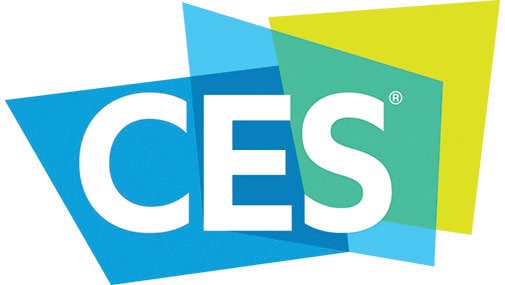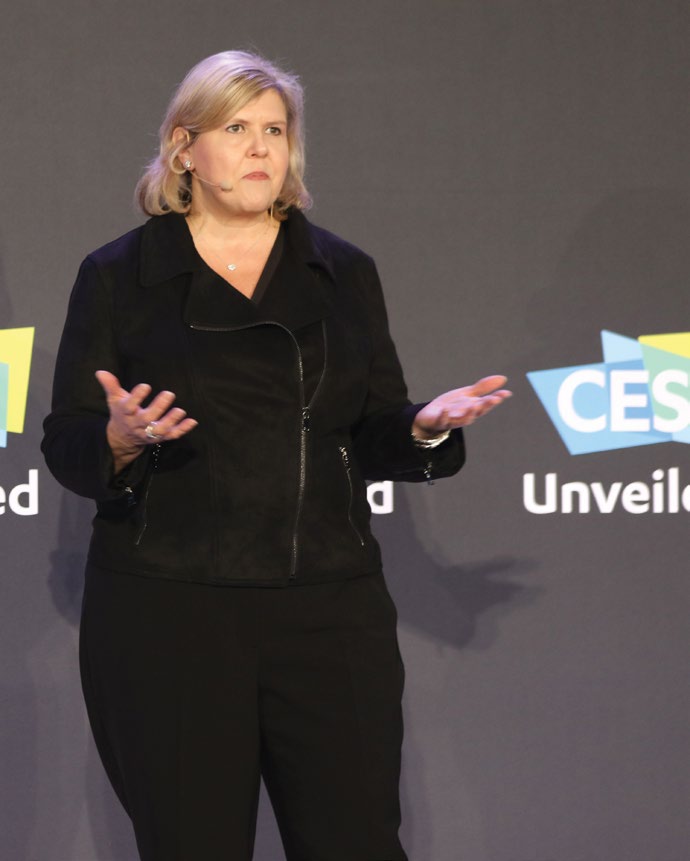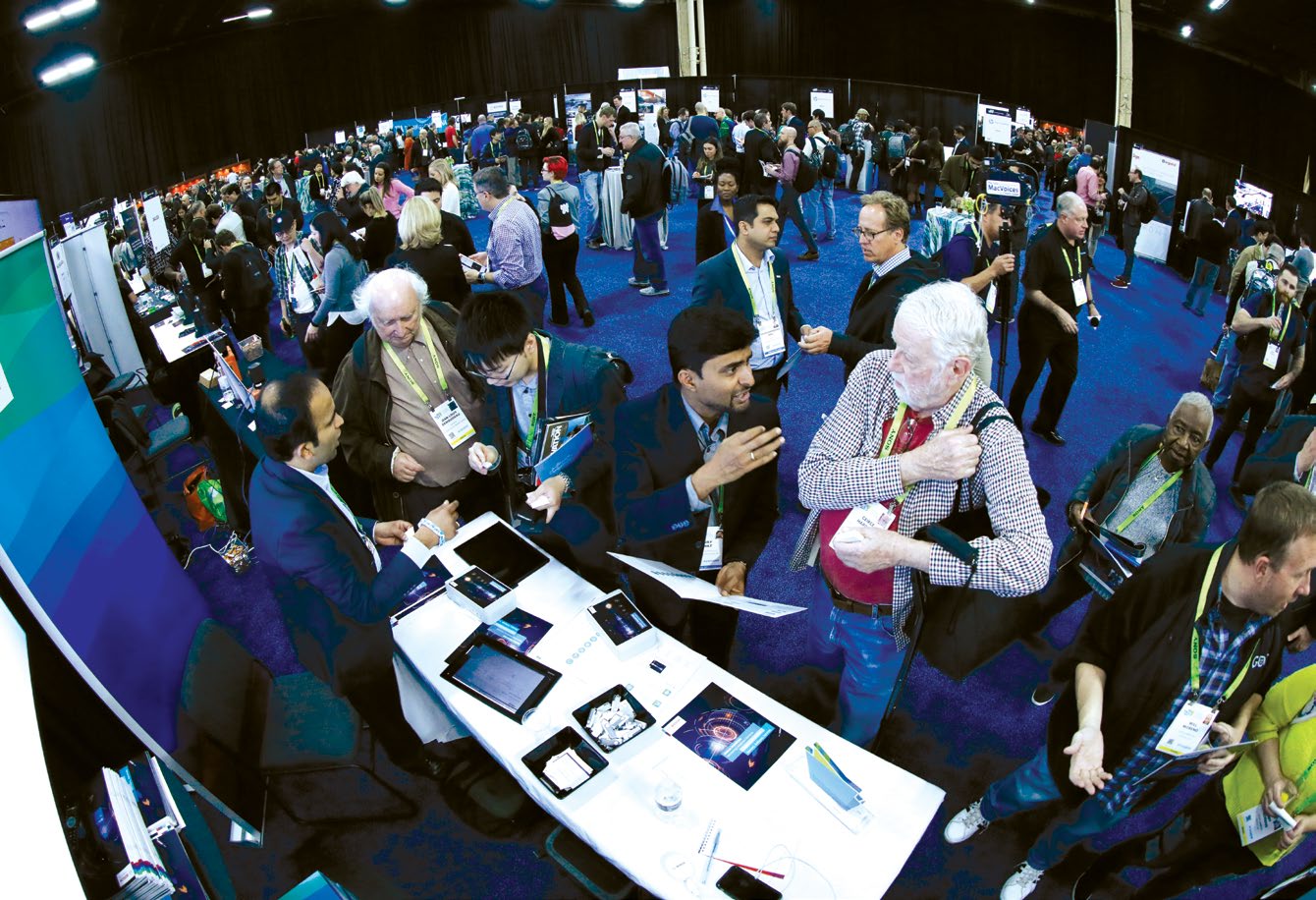CES Examines Beyond ‘TV as We Knew It’

LAS VEGAS—Last month’s launch of Disney+ marks a milestone in television that will have a significant impact on the future of the medium, according to Bob Iger, chairman/CEO for the Walt Disney Company.
“The disruption is very permanent in nature,” he said just before the streaming service’s debut. “This is a dramatic shift in the way people consume entertainment and information.”
His remarks presaged the streaming and Internet Protocol developments that will permeate CES 2020 in Las Vegas, Jan. 7–10.
Iger’s enthusiasm was predictable Hollywood hype-speak accompanying the launch of a high-profile venture that is confronting Netflix, Amazon Prime and dozens of other steaming competitors. But the media mogul’s underlying message was game-shifting—especially coming from an executive who oversees a broadcast TV network and its stations (ABC) and strong cable TV networks (notably ESPN).
“The [traditional] business is eroding fast, and it’s going to continue to do so,” Iger said at the Wall Street Journal’s Tech Live conference in Laguna Beach, Calif. “We can’t sit back and simply say our business is changing. There was no way to do something small or incremental.”
Iger’s expectation that its new streaming venture “from a strategic perspective... will be among the most valuable business initiatives that we’ve got” fits into the digital delirium that builds up each year just before the technical extravaganz a that once was known as the Consumer Electronics Show.
At next month’s CES electronics bazaar—now more suitably labeled a “technology tsunami” with its vast array of products and services—the shifting role of video and television will be discernible amid the autonomous vehicles, wellness/fitness devices, wearables and telecommunications tools. The array of 8K ultra high-definition TV displays will grow, high dynamic range video will be almost ubiquitous (“reaching down into the market,” as one analyst puts it) and the first phalanx of NEXTGEN TV (aka ATSC 3.0) will be on display.
Get the TV Tech Newsletter
The professional video industry's #1 source for news, trends and product and tech information. Sign up below.
Where once TV sets and stereo equipment once reigned supreme, the 2020 stanza will again be dominated by smart cars, a growing array of lifestyle devices and an influx of 5G communications promises.
TELEVISIONS STILL GRAB ATTENTION
“TVs are still a big part of the entertainment experience,” says Karen Chupka, executive vice president for CES at the Consumer Technology Association, which produces CES. “There’ s always a TV that comes out at CES that stuns the audience. Every year you think it cannot get better, and every year you come away saying, ‹Oh my gosh: look how far TV has come.’” But she didn’t predict what the stunning new TV set would be this year.

Chupka pointed out the growing role of “C Space,” the marketing/advertising/branding event, which has grown since its introduction five years ago. The venue gives programming and other non-tech companies the opportunity to see how they can embrace new platforms to reach their customers.
The growth of C Space has triggered rearrangements of several traditional CES programs, with sports technology conference programming and exhibits having been moved into C Space.
“That’s an important addition because so much of what’s happening in sports tech is related to advertising,” Chupka explains, noting that categories such as eSports are deeply involved in brand activation.
Brian Markwalter, senior vice president of research and standards at CTA, agre e s that streaming media will be a major topic throughout CES. “It will permeate the discussions,” he said, and he expec t s “some big announcements.” He draws a connection between the value of smart TVs and Wi-Fi, which made it easier to stream video to a TV display.
“Once Wi-Fi was built in, the connection rate s went ‹way up,” Markwalter said.
8K OR NOT, THAT IS THE QUESTION
Markwalter also expects that most manufacturers will have some sort of 8K display, mostly for very large screen devices.
“It’ll be inter e sting to see what CES shows us about the breadth of 8K offerings,” Markwalter said, recalling there was a “tipping point” about five years ago when 4K “went from three or four makers and the next year they all had it.”
Kristen Hanich, senior analyst at Parks Associates, which tracks consumer technology trends, also expects 8K will be omnipresent at CES.
“The 8K transition will be less noticeable because most people cannot see the difference in screen quality, which makes it a harder sell,” she said.
“We’re seeing the trend going toward bigger, cheaper 4K sets with HDR,” Hanich said. “TV makers putting techno logies into smaller models... where consumers are more comfortable. “Consumers adopt hardware before content is available,” she said, noting that Parks expects the 8K adoption will resemble the cycles that HDTV and 4K faced, following the replacement cycle of five to 10 years for an upgrade.
In contrast, Stephen Baker, vice president-industry analysis at The NPD Group, expects 8K will be “a drop in the bucket” in 2020.
“8K adds some incremental revenue in the short term but the volumes are so small that the impact is small,” he told TV Technology. NPD predicts that less than 1% of sales in 2020 will be 8K TVs. “It will mostly be a way for tier 1 brands to try to maintain premium pricepoints.” Nonetheless, Baker expects the average selling price (ASP) of 8K receivers could fall to $2,000 by 2021, which would expand the market.
NEXTGEN TV, SMART TVS AND MORE
NEXTGEN TV will make its first official appearance on the CES show floor via an exhibit at a primary crossroads in the Las Vegas Convention Center’s Grand Lobby and possibly at some exhibitors’ booths. The display will emphasize ATSC 3.0’s Internet Protocol capabilities.
Although it was unclear at presstime how many exhibitors—or which companies—will actually show ATSC demos within their booths, leading advocates/ATSC members such as LG and Samsung are expected to do so. Some 3.0 dongles may also be on display as a transitional tool, although product specifications are being withheld until show time.
“We expect CES 2020 will feature a wide variety of reception devices—integrated 4K Ultra HD TVs, gateway receivers, portable devices and more—optimized for reception of NEXTGEN TV signals,” said Markwalter at the 2019 NAB Show.
“We’re going to aggregate all the 3.0 services in one place, so that we can point to all the products that are at the show,” said Madeleine Noland, president of the Advanced Television System Committee. “There is a lot of 3.0 stuff. In order to understand the critical mass, we need to put it into one place.” Demonstrations will include business-to-business applications to explains the growing ecosystem, Noland added.
She said that ATSC’s booth will include pointers to other exhibits on the show floor, even those of companies that are not ATSC members. “It’s to the benefit of all members and non-members for everything to be included,” she said.
Noland envisions positioning the new “NEXTGEN” brand as part of the ATSC 3.0 story.
“We will not drop the 3.0 monicker since 3.0 can do more” than just video delivery,” she said. “We think of it as ‘NEXTGEN TV powered by ATSC 3.0.’”
“I’d like to see some products and services out there in 2020 that catch the attention of early adopters,” Noland said. “Our job is to insure that the standard is well understood and it supports the various business models that CE makers and broadcasters want. “
Anne Phillips Schelle. managing director of Pearl TV, a consortium of broadcasters and manufacturers promoting and testing ATSC 3.0, calls 2020 “our year to kick it off.”
“I’ve seen a lot more investment interest,” including from retailers, she said. Schelle said the station groups’ goal is “to ramp expansion of 3.0” beyond the video services.” At CES, Pearl will distribute a “station manual that shows a profile of recommended services that stations should support to match what receivers can receive.”
Pearl will also unveil findings from its Consumer Labs, which tracked early field trials. Schelle pointed out that “audio played well,” noting that consumers “loved the Dolby AC audio coding features,” such as “voice boost” which assures consistent audio volume across channels.
Pearl will showcase applications that were developed with stations in the Phoenix model market trial. At its demonstration suite at Wynn’s Hotel, Schelle also expects that Pearl will continue its discussions with automakers about future reception capabilities in vehicles—a process that she acknowledges can take three years.
ONE Media 3.0, Sinclair Broadcasting Group’s technology unit, is also expected to demonstrate its 3.0 progress; however, the company did not respond to a request for a preview of its CES presentations.
Analysts also have plenty to say about the arrival of NEXTGEN TV.
“The time has come for NEXTGEN TV devices to show up,” says Brett Sappington, senior research director and principal analyst at Parks Associates. “Broadcasters have a vested interest in how to live in a streaming world, and 3.0 enables them to do that. They are making sure that 3.0 is adopted by consumers.”
Sappington contends that broadcasters must have content for 3.0 sets.
“If content and hardware comes out within a year... broadcasters will be able to pitch that to consumers,” he said. “The opportunity is there and the market is there because so many people want to cut the cord.”
There is every opportunity for broadcasters to be successful, according to Sappington, “but it will depend on execution.”
The growing presence of smart TV sets plays into this scenario. Parks data shows that by September of this year, 50% of U.S. broadband homes owned at least one smart TV and 85% of those households connect at least one to the internet, she said.
“We’re seeing that smart TVs with smart operating system in all sizes and all price ranges,” Parks’ Hanich added. “Smart TVs offer all kinds of revenue opportunities,” citing the appeal for streaming content and the growing use of advertising metrics through the connected sets.
Sappington also noted the growing role of smart speakers, and ancillary devices that put another smart screen in the home, such as Echo Show, Facebook Portal or Google Home Hub.
It’s not TV, but it moves closer to it,” he said.
Baker of NPD agrees there are “certainly some interesting opportunities.” But he frets that “broadcasters are not the ideal folks to take advantage of that and, traditionally, the TV hardware makers have not dabbled in that area.”
Baker’s research finds that consumers are now “mostly reluctant to buy a TV that isn’t smart, even if they intend or prefer to use a plug-in smart device like Roku or Apple TV.”
“There is an opportunity, for good or bad, for TV makers to view the screen as valuable real estate and try to sell access to it,” Baker adds. “The challenge is that TVs are mostly [even with the ubiquity of pre-installed OS’es] an open platform.” Nonetheless, Baker is upbeat about TV.
“Consumers love screens, they love big screens and they want to watch great content on those big screens,” he added. Baker singled out “the fastest growing segments of big screen TV buyers is late stage millennials.”
“They want that TV the same way the generations before them did. And I believe it will stay like that for some time to come,” Baker predicted.
One wild card is a 5G TV receiver, which Huawei announced for China earlier this year. Hanich cited the potential, but concluded it will probably not be a U.S. product in the immediate future. She suggested that it’s more likely in India where wireless video is more widespread.
COMING BACK TO IGER’S OUTLOOK
The “digital overload”—which is in the DNA of CES’s overwhelming experience—all comes back to Disney’s Iger and his recent musings about the changing roles of the content and hardware and transmission industries.
As Iger said during last month’s Disney+ hypefest, today’s video options “require an immediate shift in strategy in order to... thrive in a world that doesn’t look anything like” the TV business a few years ago.
“If you look at the erosion of the multichannel bundle, and the ways that people are consuming media... there’s a migration that… will speed up.” He cited the growth of “direct-to-consumer” (D2C) services and acknowledged that his company will look for “more program rights for ESPN Plus,” the on-demand streaming video venture. There will come a time “down the road… when the shift of the consumer perspective is enough to warrant” further moves of programming from linear platforms to streaming, Iger said.
“You’re seeing a frenzy for a good reason right now,” he added. “There is real change in technology that is driving a huge change in consumer behavior. It’s hard to predict whether there’s a settling down or a settling in. The world is so aswirl in change today; it’s hard to imagine settling in for anything we do.”
Underscoring the expanding reach of CTA into new tech realms, CTA and the World Bank Group will reveal more details of “The Global Tech Challenge,” their partnership “to mobilize the tech community” announced last month. The challenge will focus on three topics: health, gender barriers and technologies that enable communities to be more resilient in the face of disasters and climate change. Makhtar Diop, World Bank vice president of infrastructure, characterized the project as seeking to encourage “the tech community to come up with bold and practical ideas to solve specific challenges... [and] to bring the voices of entrepreneurs from countries often under-represented to the global tech stage.” Finalists of the challenge will be announced at CES 2021.
CES By the Numbers

In an early experiment of practicing what it preaches, CTA is adopting an evolving category - facial recognition—as part of its attendee registration process. People can pick up their on-site badges by smiling into a camera, matching their mugs to the photo ID required in advance online registration. Although there’s no estimate about how many attendees will use the process rather than the traditional method of pulling out a driver’s license or passport, it will become another statistic in the growing tally of datapoints about CES.
For example, the 2020 line-up envisions:
• “More than 170,000” attendees is the official CTA forecast, but many veterans expect the final body count to fall between 175,212 people (2019 audited attendance) and 182,198 (in 2018), depending in part on holiday sales volume and economic expectations for 2020.
• Among the attendees, 75,000 will be “senior executives” and 60,000 will come from outside the U.S. (not mutually exclusive). About 6,000 “media” (reporters, editors, analysts) are expected.
• 4,500 exhibitors, slightly more than in previous years, fueled by the growing number of small, startups in the Eureka Park section.
• 2.9 million square feet of exhibit space spread among three “campuses,” each of which includes multiple buildings and hotels.
• 300 conference sessions ranging from artificial intelligence to sports technology. In addition, several events will take place adjacent to CES, including the 38th International Conference on Consumer Electronics 2020 (ICCE).
Gary Arlen, a contributor to Broadcasting & Cable, NextTV and TV Tech, is known for his visionary insights into the convergence of media + telecom + content + technology. His perspectives on public/tech policy, marketing and audience measurement have added to the value of his research and analyses of emerging interactive and broadband services. Gary was founder/editor/publisher of Interactivity Report, TeleServices Report and other influential newsletters; he was the long-time “curmudgeon” columnist for Multichannel News as well as a regular contributor to AdMap, Washington Technology and Telecommunications Reports; Gary writes regularly about trends and media/marketing for the Consumer Technology Association's i3 magazine plus several blogs.

